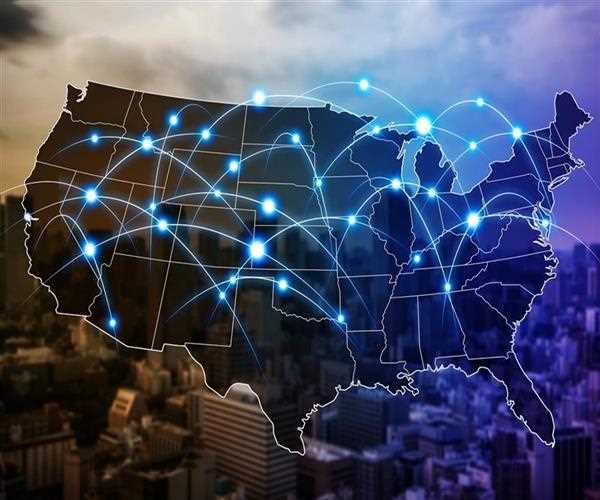
15-May-2023 , Updated on 5/15/2023 2:44:13 AM
Future of United States- Trends and Predictions
The United States is a country with a rich history and a diverse population. Over the years, the country has faced many challenges and undergone significant changes, both economically and socially. Looking to the future, there are many trends and predictions that can help us better understand what lies ahead for the United States.
The working class will be destroyed by robots and artificial intelligence. As a result, job competition will increase exponentially, as will demands to reduce minimum wage laws and other worker protections.
The gap between incomes will widen. The highest earners will have armed guards, live in safe enclaves, and donate to charitable organizations like the crematoria foundation and robotic street-sweepers. Consider it.
The population will decrease, real estate values will fall, and the cost of many consumables will rise unless food riots and paramilitary intervention occur.
The market for human parts will expand. Child labor and indentured servitude will both make a comeback.
Or, even conservatives will come to the realization that wealth redistribution isn't as bad as people think it is, and that anyone who has enough money to spend $100,00 per day without hurting their mortgage might be able to save a lot of money.
Since we will at this point not be living in a customer-driven society. Buyers will in any case be significant, and its smarter to make ten pennies multiple times than it is to earn anything multiple times.
Demographic Shifts
One of the most significant trends in the United States is the ongoing demographic shift. The country is becoming more diverse, with the non-Hispanic white population projected to decline over the coming decades. By 2045, the United States is expected to become a majority-minority nation, with no single racial or ethnic group accounting for more than 50% of the population.
This demographic shift is likely to have significant implications for the country, particularly in terms of politics and culture. As the country becomes more diverse, it is likely that issues related to race, ethnicity, and identity will become more prominent in public discourse. Additionally, the growing diversity of the country is likely to have an impact on political power dynamics, with different groups vying for representation and influence.
Technological Advancements
Another trend that is likely to shape the future of the United States is the ongoing advancement of technology. In recent years, there have been significant breakthroughs in areas such as artificial intelligence, robotics, and biotechnology. These advancements have the potential to transform many aspects of society, including the economy, healthcare, and transportation.
One potential impact of these technological advancements is increased automation in the workforce. As more jobs become automated, there is a risk of significant job loss in certain sectors. However, there is also the potential for new jobs to be created in areas such as data analysis, software development, and cybersecurity.
Climate Change and Environmental Concerns
Climate change is another issue that is likely to have a significant impact on the future of the United States. The country has already experienced the effects of climate change, including rising sea levels, more frequent natural disasters, and changes in weather patterns. If left unchecked, these effects are likely to become more severe over time.
To address this issue, there is a growing push for the United States to transition to a more sustainable and environmentally-friendly economy. This transition could involve the widespread adoption of renewable energy sources such as solar and wind power, as well as increased investments in energy-efficient technologies and infrastructure.
Political Polarization
Political polarization is another trend that is likely to shape the future of the United States. In recent years, the country has become increasingly divided along partisan lines, with little room for compromise or cooperation. This polarization has had a significant impact on the country's political system, with gridlock and dysfunction becoming more common.
One potential consequence of this polarization is a decline in public trust in government institutions. If people lose faith in the ability of the government to solve problems and address issues, it could lead to a rise in populism or even a breakdown in the democratic process.
The leading knowledge economy will be the United States of America economically. Africa will outsource large-scale, low-level manufacturing (Asia will begin to become a continent of old people). Little bunch assembling will be done through added substance and subtractive printing - quick 3D printers cum processing cutters.
The future of the United States is likely to be shaped by a variety of trends and predictions. Demographic shifts, technological advancements, climate change, and political polarization are just a few of the factors that are likely to have a significant impact on the country over the coming years. While some of these trends may present significant challenges, there are also opportunities for the United States to adapt and thrive in the years ahead. Ultimately, the future of the country will be determined by the choices that its citizens and leaders make in the years to come.

SEO and Content Writer
I am Drishan vig. I used to write blogs, articles, and stories in a way that entices the audience. I assure you that consistency, style, and tone must be met while writing the content. Working with the clients like bfc, varthana, ITC hotels, indusind, mumpa, mollydolly etc. has made me realized that writing content is not enough but doing seo is the first thing for it.
Join Our Newsletter
Subscribe to our newsletter to receive emails about new views posts, releases and updates.
Copyright 2010 - 2025 MindStick Software Pvt. Ltd. All Rights Reserved Privacy Policy | Terms & Conditions | Cookie Policy